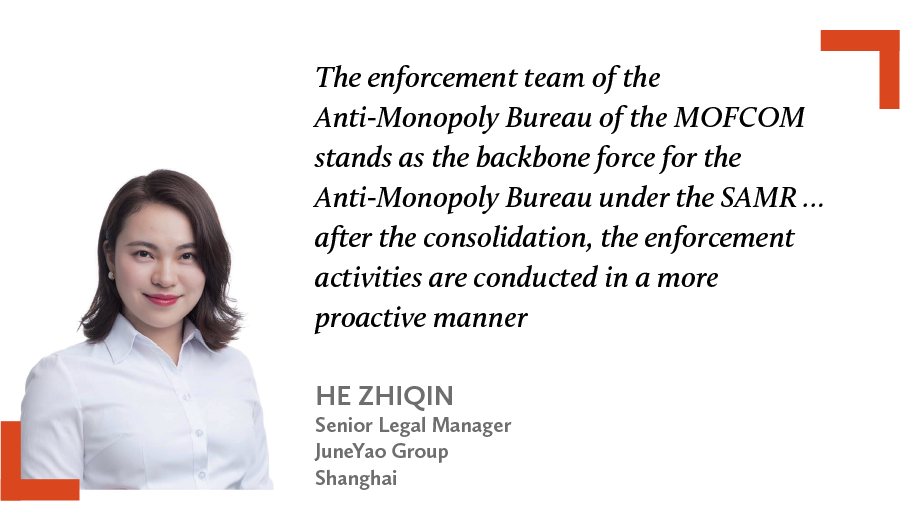The consolidation of antitrust agencies and the reform and innovation of laws and regulations signal China’s determination to capture and eliminate antitrust practices, writes Luo Weiteng
At the forefront of China’s steady legal reformation is the desire – and the necessity, if it is to convince the world that the country’s trade conditions are improving and attractive – to create fair and equitable trade winds for all comers. With this in mind as the State Council presses ahead with its reforms, China has consolidated the functions of the previous three antitrust agencies – the Anti-Monopoly Bureau of the Ministry of Commerce (MOFCOM), the Price Supervision/Inspection and Anti-Monopoly Bureau of the National Development and Reform Commission (NDRC), and the Anti-Monopoly and Anti-Unfair Competition Bureau of the State Administration of Industry and Commerce (SAIC) – into a newly established agency, the State Administration for Market Regulation (SAMR). The new supervisory administration sends a strong message that antitrust regulation and enforcement will be strengthened. A regulatory storm is on the horizon.
So far, the bureaucratic overhaul at the SAMR level has come to an end. The antitrust agencies and personnel at provincial level are put in place in a progressive manner. The Anti-Monopoly Bureau overseen by SAMR is organized into 10 divisions, within which seven are enforcement divisions. Among them, three divisions are responsible for merger review, while the other four handle monopoly agreements, abuse of dominance, administrative monopoly, and supervision and enforcement.
The Anti-Monopoly Bureau also includes three general divisions, namely the general office, where the competition policy and anti-monopoly committee co-ordination responsibilities are divided.
“Previously, the antitrust regulators exercised subdivided functions and power based on price and non-price monopoly behaviours,” says He Zhiqin, a senior legal manager at the legal compliance department of the Shanghai-based JuneYao Group. “Now, the enforcement divisions perform separate functions according to the types of antitrust activities. The appointed heads of the Monopoly Agreements Division and the Abuse of Dominance Division come from different institutions. Although the enforcement procedures remain unchanged as before, companies under investigation will be more likely to have their voice heard.”
As the separation of the three antitrust authorities becomes a thing of the past, “the enforcement team of the Anti-Monopoly Bureau of MOFCOM stands as the backbone force for the Anti-Monopoly Bureau under the SAMR,” says He. “After the consolidation, the enforcement activities are conducted in a more proactive manner.”
You must be a
subscribersubscribersubscribersubscriber
to read this content, please
subscribesubscribesubscribesubscribe
today.
For group subscribers, please click here to access.
Interested in group subscription? Please contact us.






















